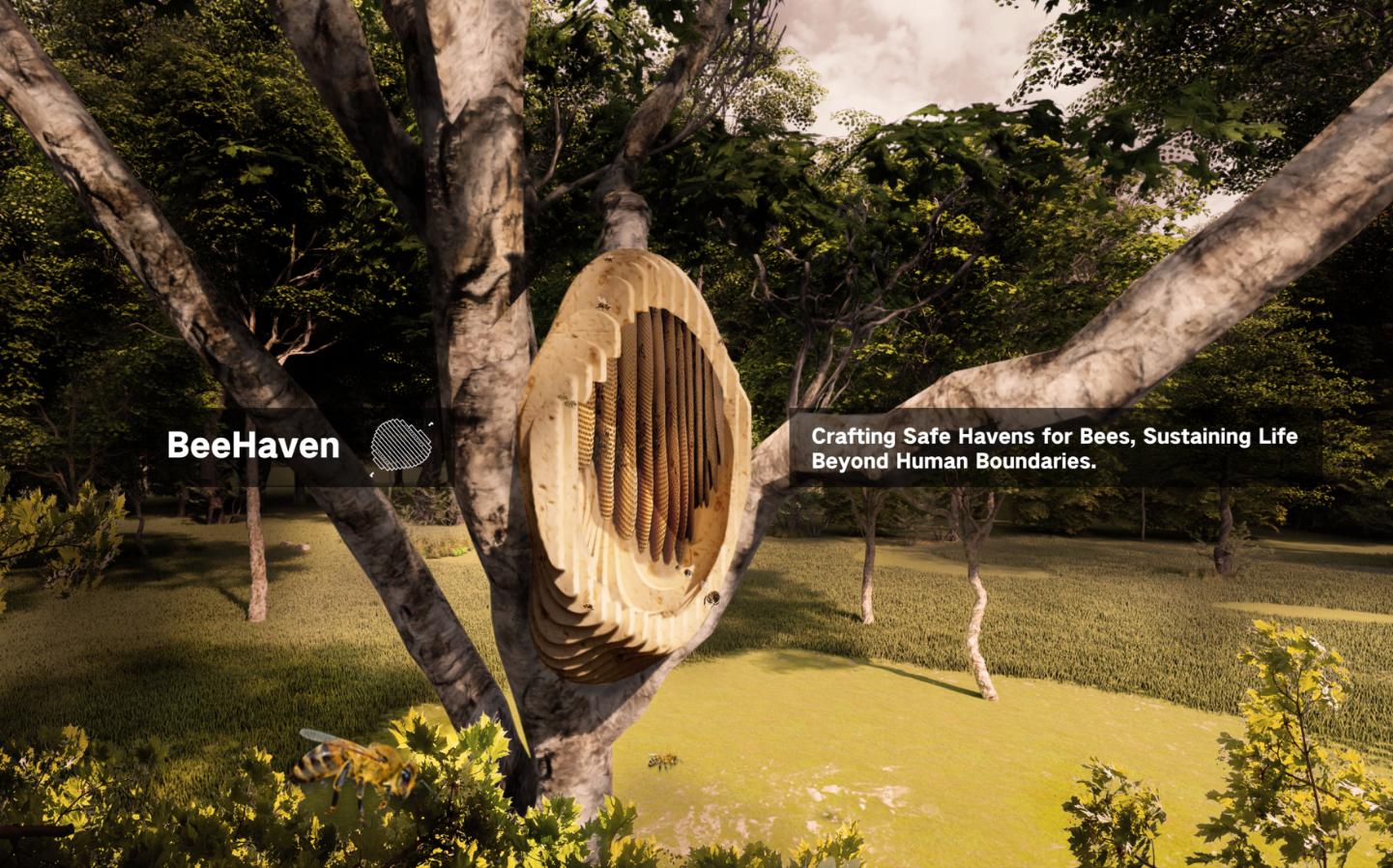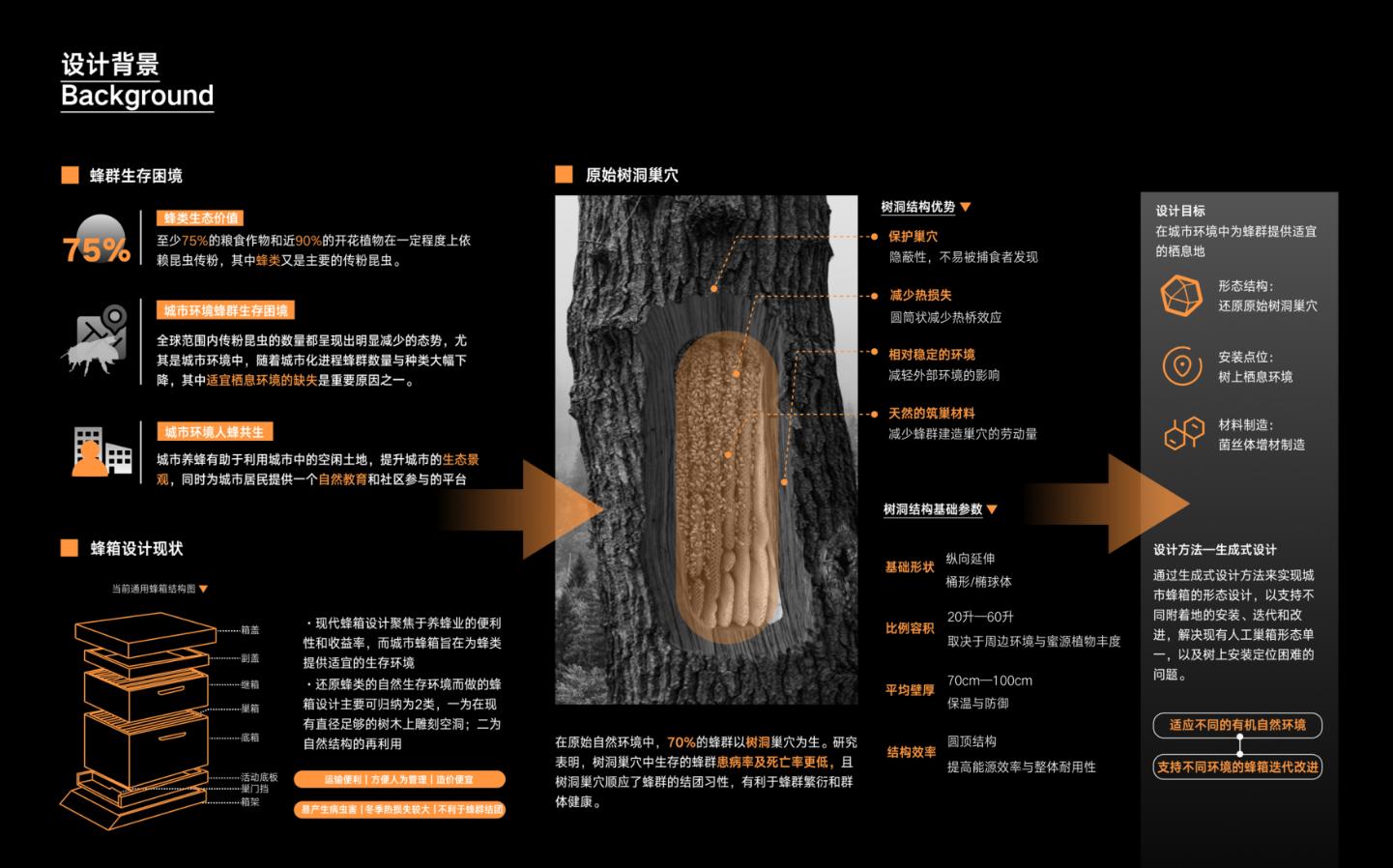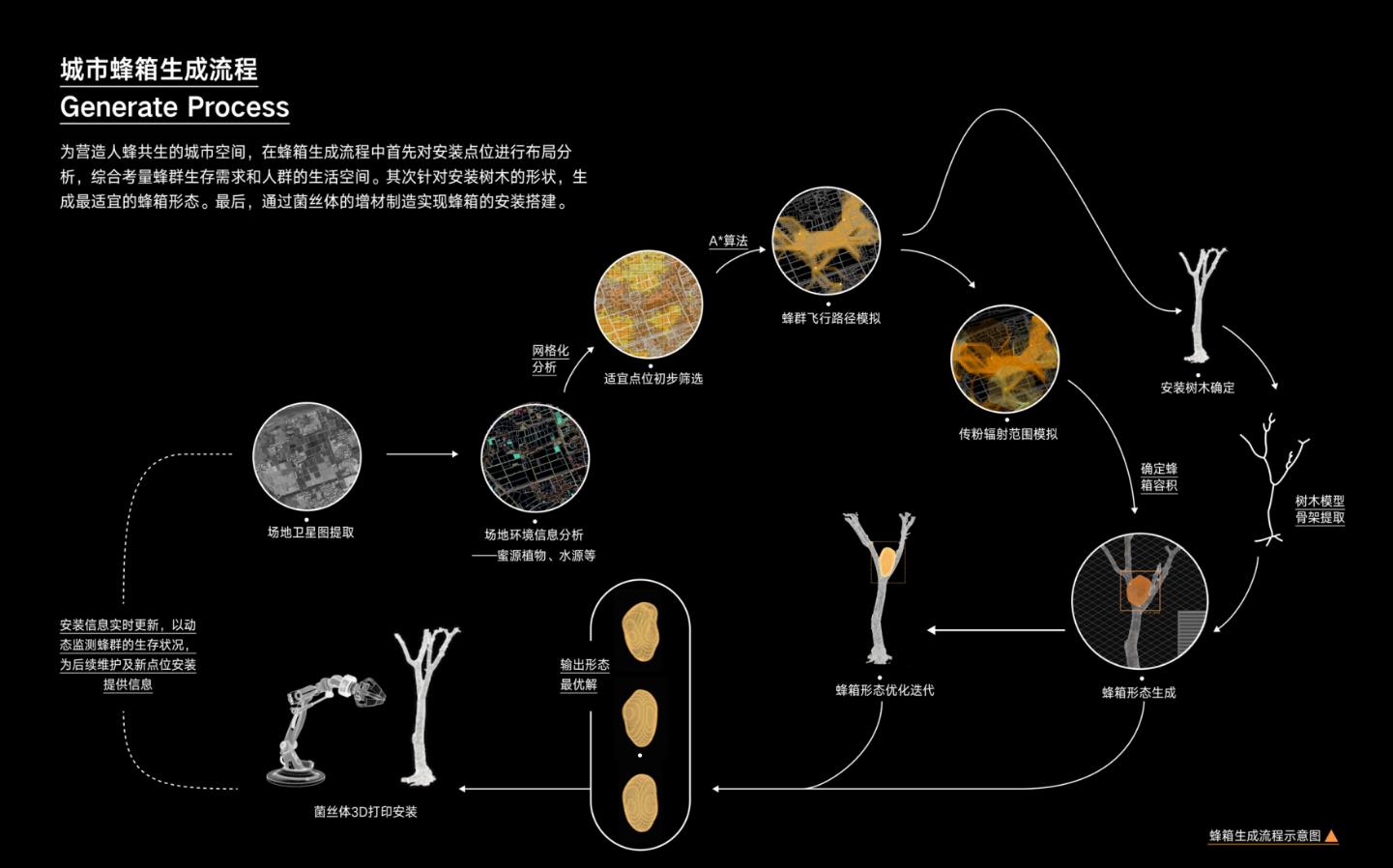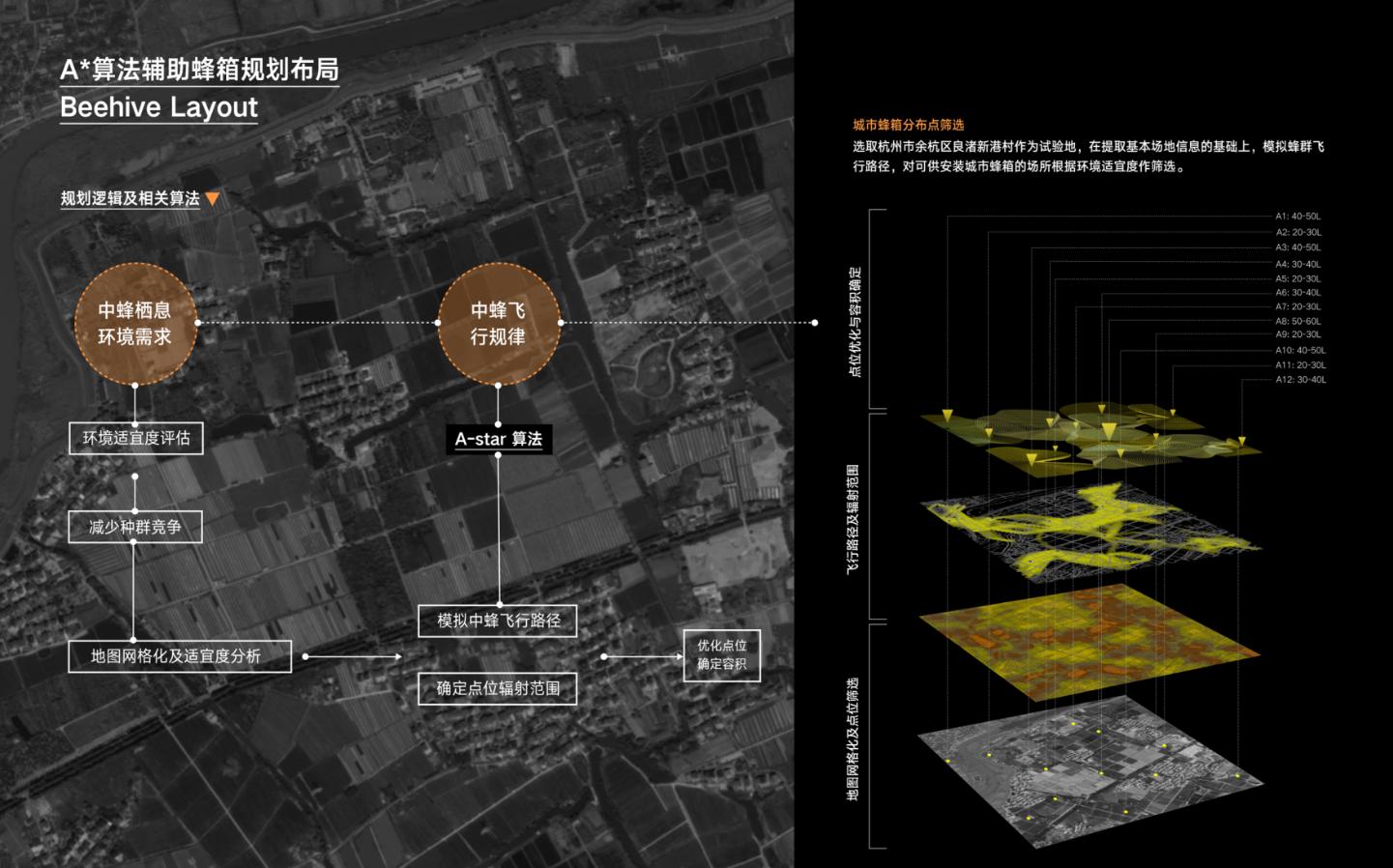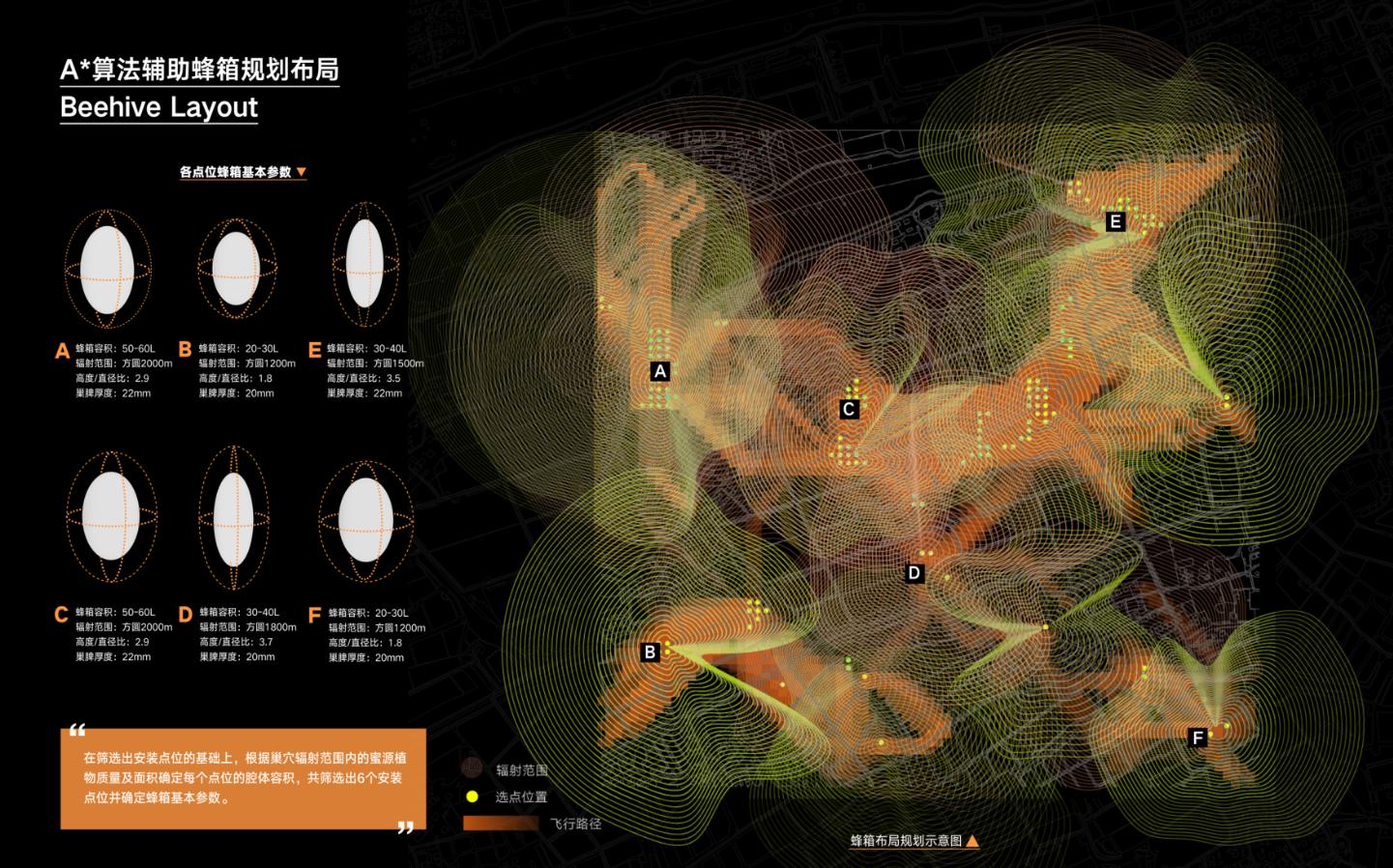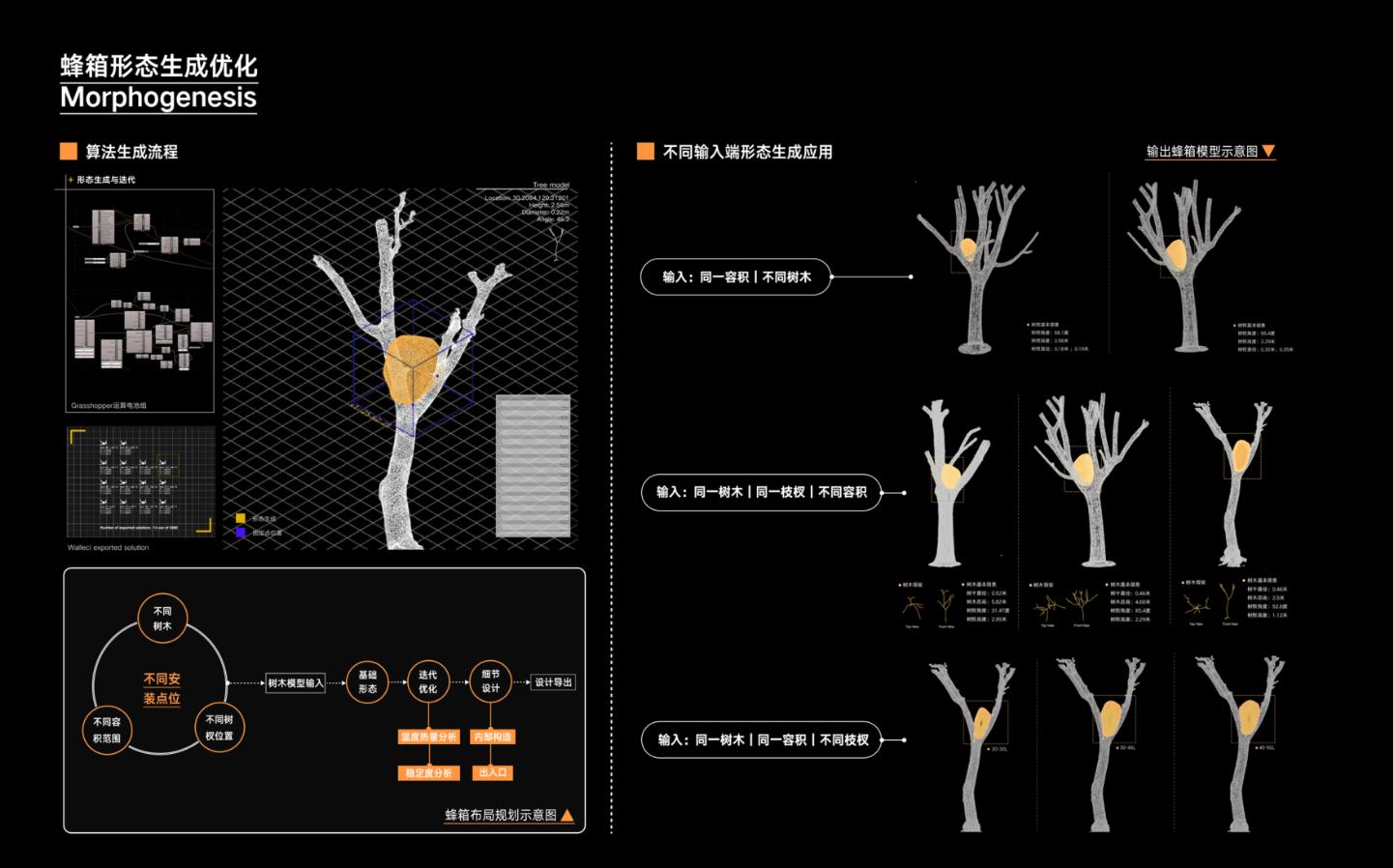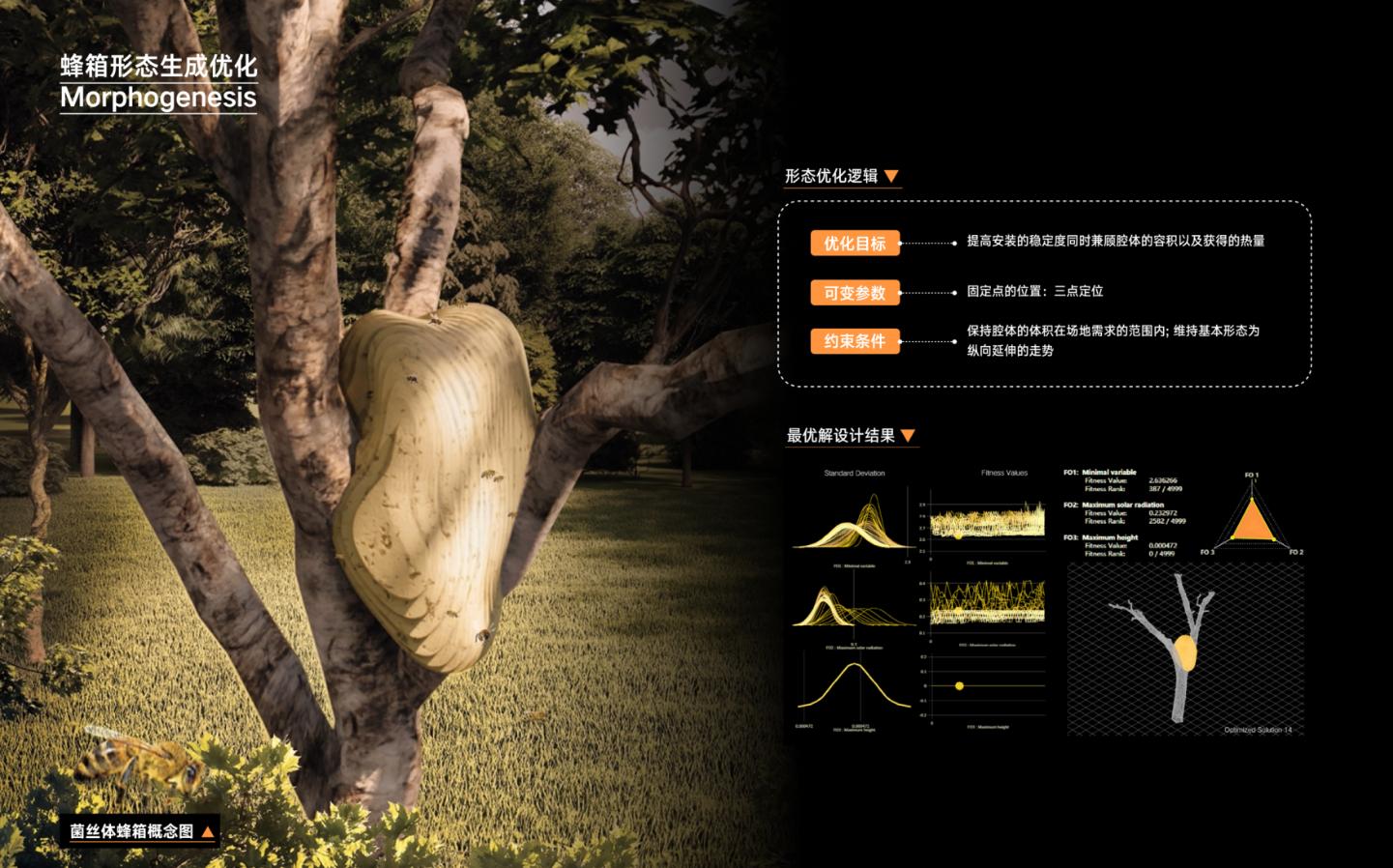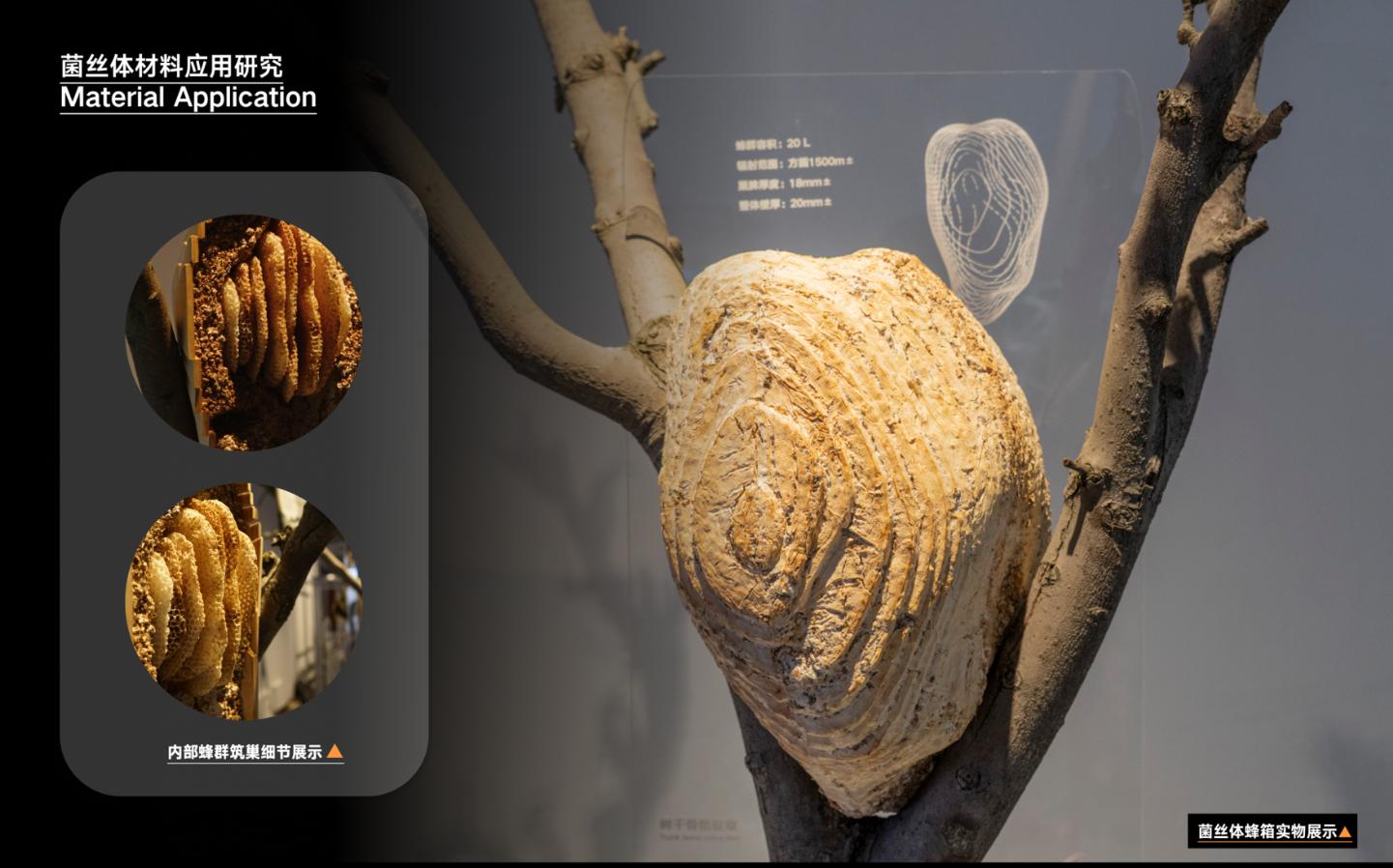BeeHaven
This design project is based on the concept of "More than Human Design" and cross-species coexistence, and aims to build an ecosystem of human-bee symbiosis, provide a sustainable habitat space for pollination bees, and relieve their survival pressure. The project carries out accurate site selection through multi-level analysis of environmental conditions, combined with A- star algorithm to screen suitable trees, which provides a scientific basis for the generation of bee habitat. In the form design, through the digital scanning of the tree form, the habitat model which is highly suitable for the ecological needs of bees is generated. In addition, the project introduces mycelium additive manufacturing technology to organically integrate mycelium with tree morphology to form a habitat structure with dynamic adaptability.
Ecological protection and sustainability: The design echoes China's policies on biodiversity conservation, such as the implementation of the Convention on Biological Diversity, to help urban ecological restoration.
Modern translation of traditional wisdom: the beehive form draws on the traditional Chinese tree hole beekeeping method and combines digital technology to optimize it to realize the modern application of traditional ecological practice.
New material exploration: the use of mycelium biomaterials as a beehive structure matrix, combined with China's native plant fibers, to explore the possibility of integration of old and new materials, to promote the application of biomaterials in China.
Sustainable urban development: The project is in line with the concept of "sponge city" in China. Through the ecological intervention of beehives, the ecological value of urban green space is improved, and the coexistence of urban environment and biology is promoted.
The team graduated from the School of Innovative Design, China Academy of Art, with research interests in ecological design and sustainable materials. Our research focuses on innovative design solutions that promote cross-species coexistence and ecological sustainability. By combining advanced technologies with ecological principles, we hope to address environmental challenges and contribute to sustainable urban development.








